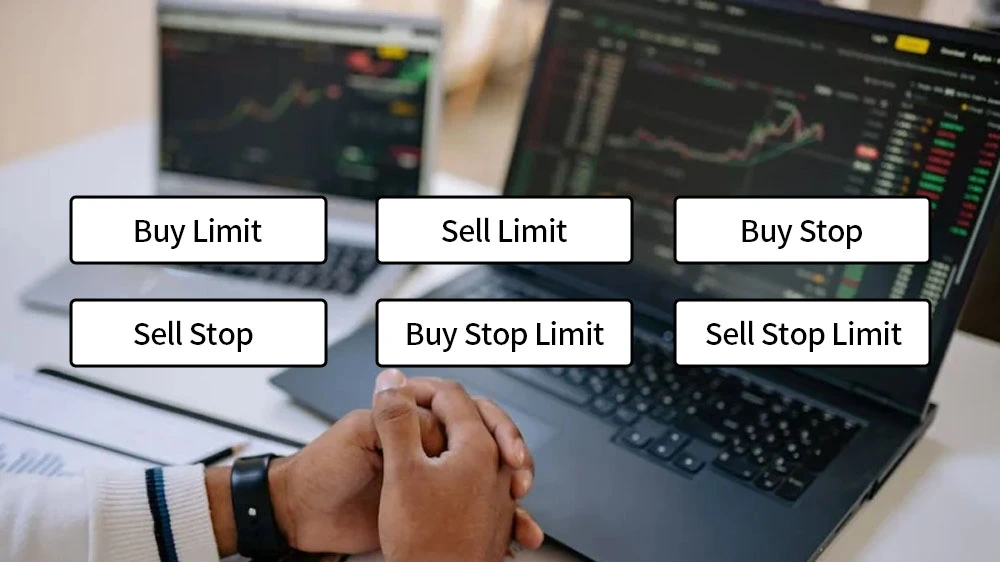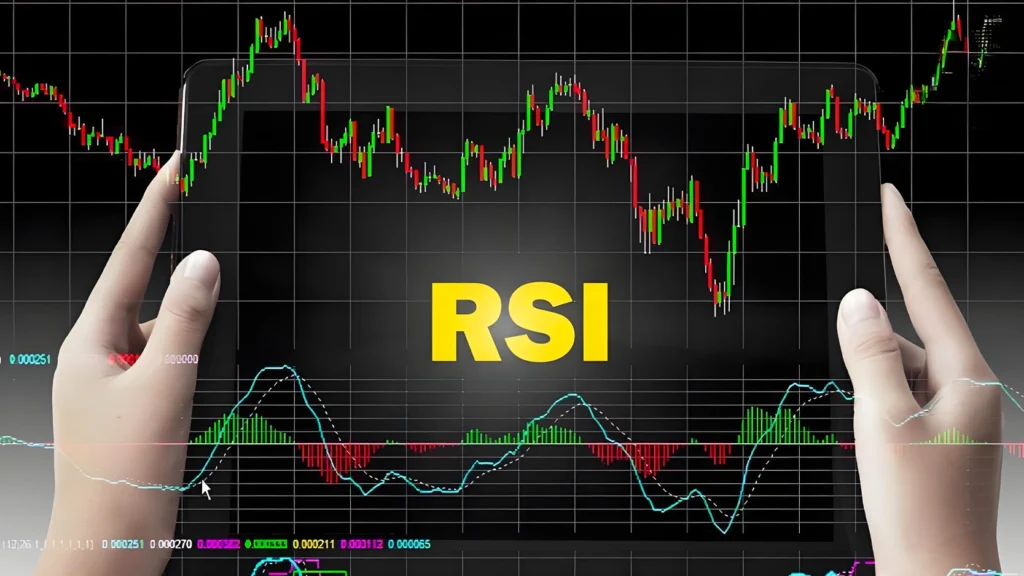Detailed Trading Strategies: Six Types of Pending Orders and Application Strategies
In foreign exchange trading, pending orders are a way for traders to automatically execute trades when the market price reaches specific conditions. Through pending orders, traders do not need to monitor the market constantly, as the trading platform will automatically execute trades at the appropriate price, improving trading efficiency and reducing missed opportunities caused by market fluctuations. Different types of pending orders are suitable for different trading strategies, helping traders manage entry and exit points more effectively.
Buy Limit
A Buy Limit is a type of buy pending order. When the market price falls to the set limit price, the order will be automatically executed, buying at that price or lower.
Applicable Scenario
A Buy Limit is suitable for traders who want to enter the market at a price lower than the current market price and is commonly used in a buying-on-dips strategy. For example, if the current EUR/USD price is 1.1000 and the trader believes the price is likely to rebound after dropping to 1.0950, a Buy Limit order can be set at 1.0950 to ensure buying at that level or lower.
Advantages and Risks
Advantages: Allows buying at a lower price, improving the risk-reward ratio.
Risks: If the market does not drop to the set price level, the order will not be executed, which may result in missing trading opportunities.
Sell Limit
Sell Limit is a type of sell pending order. When the market price rises to the set price, the order will be automatically executed and sell at that price or higher.
Applicable Scenario
Sell Limit is suitable for traders who want to enter at a price higher than the current market price, usually used for sell-high strategies. For example, if the current EUR/USD price is 1.1000 and the trader believes the price will fall after rising to 1.1050, a Sell Limit order can be set at 1.1050 to ensure selling at that price or higher.
Advantages and Risks
Advantages: Allows selling at a higher price, improving the risk-reward ratio.
Risks: If the market does not rise to the set price level, the order will not be executed, which may result in missing a trading opportunity.
Buy Stop
Buy Stop is a type of buy pending order. When the market price rises to the set price, the order will be automatically executed and bought at the current market price.
Applicable Scenario
Buy Stop is suitable for breakout trading strategies. When the price breaks through a certain resistance level, traders expect the market to rise further. For example, if the current EUR/USD price is 1.1000, and the trader believes that once it breaks 1.1050 it will continue to rise, a Buy Stop order can be set at 1.1050.
Advantages and Risks
Advantages: Allows entry when the trend is confirmed, avoiding premature market entry.
Risks: A pullback may occur after the price breakout, leading to short-term losses.
Sell Stop
Sell Stop is a type of sell pending order. When the market price falls to the set price, the order will be automatically executed and sold at the current market price.
Applicable Scenario
Sell Stop is suitable for breakout trading strategies. When the price breaks below a certain support level, traders expect the market to continue falling. For example, if the current EUR/USD price is 1.1000 and the trader believes that if it falls below 1.0950 the market will further decline, then a Sell Stop order can be placed at 1.0950.
Advantages and Risks
Advantages: Allows entry when the trend is confirmed, avoiding entering the market too early.
Risks: The price may rebound after breaking below the support level, resulting in short-term losses.
Buy Stop Limit
Buy Stop Limit is a combination of Buy Stop and Buy Limit. When the market price reaches the Buy Stop set value, the system will not execute immediately at the market price but will automatically place a Buy Limit order.
Applicable Scenario
Buy Stop Limit is suitable for traders who want to buy after a breakout but do not want to execute at too high a price. For example, if the current EUR/USD price is 1.1000, and the trader believes that breaking through 1.1050 is a bullish signal but does not want to enter above 1.1060, they can set a Buy Stop Limit with a trigger price of 1.1050 and a limit price of 1.1060.
Advantages and Risks
Advantages: Avoids buying at too high a price due to significant market fluctuations after the breakout.
Risks: If the price does not pull back to the limit price range, the order will not be executed.
Sell Stop Limit
Sell Stop Limit is a combination of Sell Stop and Sell Limit. When the market price reaches the Sell Stop set value, the system will not execute immediately at the market price but will automatically place a Sell Limit order.
Applicable Scenario
Sell Stop Limit is suitable for traders who wish to sell after the price breaks below a certain support level but do not want to trade at a price that is too low. For example, if the current EUR/USD price is 1.1000 and the trader believes that breaking below 1.0950 is a bearish signal but does not want to sell below 1.0940, they can set a Sell Stop Limit with a trigger price at 1.0950 and a limit price at 1.0940.
Advantages and Risks
Advantages: Avoids significant market fluctuations after the drop, preventing selling at a price that is too low.
Risks: If the price does not rebound to the limit range, the order will not be executed.
Summary of Six Pending Order Types
| Order Type | Trigger Condition | Price Relationship | Main Purpose | Risks and Limitations |
| Buy Limit | Market price ≤ set price | Set price < current price | Buy at a lower price to control costs | May miss upward opportunities |
| Sell Limit | Market price ≥ set price | Set price > current price | Sell at a higher price to lock in profits | May miss downward opportunities |
| Buy Stop |
Market price ≥ set price |
Set price > current price | Breakout buying to protect short positions | Slippage risk, false breakout risk |
| Sell Stop | Market price ≤ set price | Set price < current price | Stop-loss or follow the downtrend to limit losses | Gap risk, false breakdown risk |
| Buy Stop Limit | Limit order effective after market price ≥ trigger price | Trigger price > limit price ≥ current price | Buy on pullback after breakout, avoid buying too high | Order invalid if the price does not pull back |
| Sell Stop Limit | Limit order effective after market price ≤ trigger price | Trigger price < limit price ≤ current price | Sell on rebound after breakdown, avoid selling too low | Order invalid if the price does not rebound |
Related articles
-
In the realm of modern financial market analysis, whether it’s the fast-changing forex market, the highly volatile cryptocurrency space, or traditional stock indices, technical analysis plays an indispensable role. Among the many technical indicators, the Relative Strength Index (RSI) is undoubtedly one of the most classic and widely used tools....2025 年 9 月 4 日
-
In today's environment of persistently low interest rates combined with inflationary pressures, simply depositing money in the bank is no longer sufficient to preserve the future value of your assets. An increasing number of investors are seeking more proactive ways to grow their wealth, shifting from traditional savers to active...2025 年 8 月 13 日
-
In financial market terminology, “bottom-fishing” is a highly enticing yet challenging concept. It refers to an investment strategy aimed at buying assets that have undergone significant price declines and are believed to be undervalued, with the expectation that their prices will eventually rebound sharply. This strategy embodies the ultimate expression...2025 年 8 月 13 日













